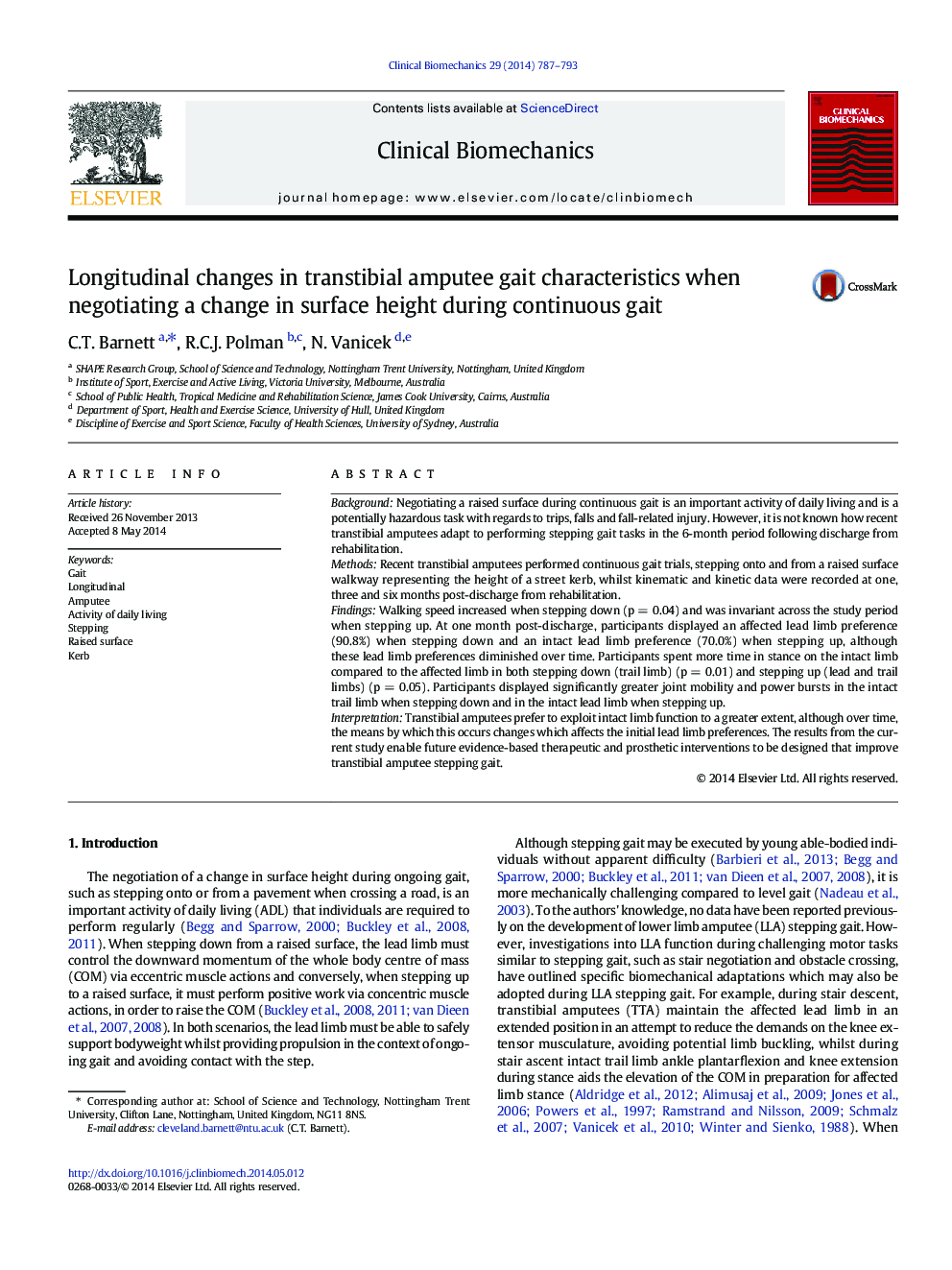| کد مقاله | کد نشریه | سال انتشار | مقاله انگلیسی | نسخه تمام متن |
|---|---|---|---|---|
| 6204888 | 1264927 | 2014 | 7 صفحه PDF | دانلود رایگان |

- Recent transtibial amputee stepping gait biomechanics were examined.
- The performance of stepping gait improved over time.
- Amputees adapted the lead limb preferences used during continuous stepping gait.
- Exploitation of intact limb function was crucial to stepping gait performance.
- Data provide an objective basis to inform therapeutic and prosthetic interventions.
BackgroundNegotiating a raised surface during continuous gait is an important activity of daily living and is a potentially hazardous task with regards to trips, falls and fall-related injury. However, it is not known how recent transtibial amputees adapt to performing stepping gait tasks in the 6-month period following discharge from rehabilitation.MethodsRecent transtibial amputees performed continuous gait trials, stepping onto and from a raised surface walkway representing the height of a street kerb, whilst kinematic and kinetic data were recorded at one, three and six months post-discharge from rehabilitation.FindingsWalking speed increased when stepping down (p = 0.04) and was invariant across the study period when stepping up. At one month post-discharge, participants displayed an affected lead limb preference (90.8%) when stepping down and an intact lead limb preference (70.0%) when stepping up, although these lead limb preferences diminished over time. Participants spent more time in stance on the intact limb compared to the affected limb in both stepping down (trail limb) (p = 0.01) and stepping up (lead and trail limbs) (p = 0.05). Participants displayed significantly greater joint mobility and power bursts in the intact trail limb when stepping down and in the intact lead limb when stepping up.InterpretationTranstibial amputees prefer to exploit intact limb function to a greater extent, although over time, the means by which this occurs changes which affects the initial lead limb preferences. The results from the current study enable future evidence-based therapeutic and prosthetic interventions to be designed that improve transtibial amputee stepping gait.
Journal: Clinical Biomechanics - Volume 29, Issue 7, August 2014, Pages 787-793